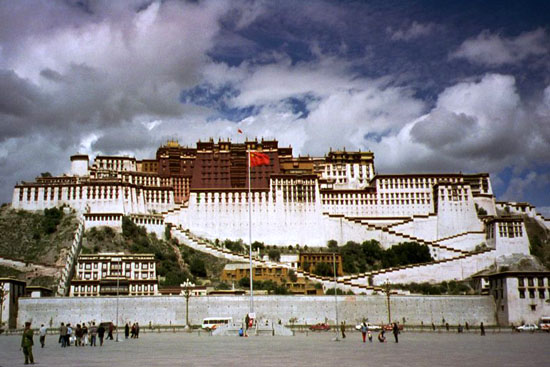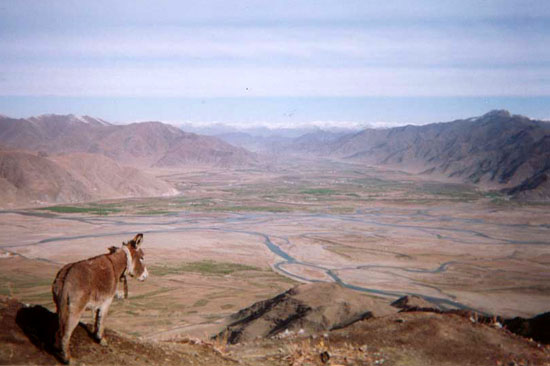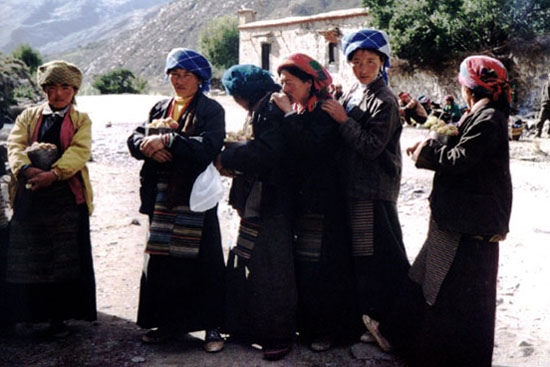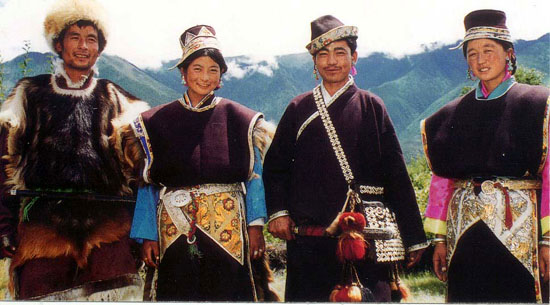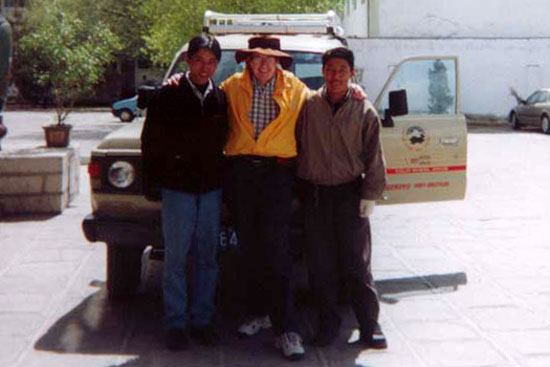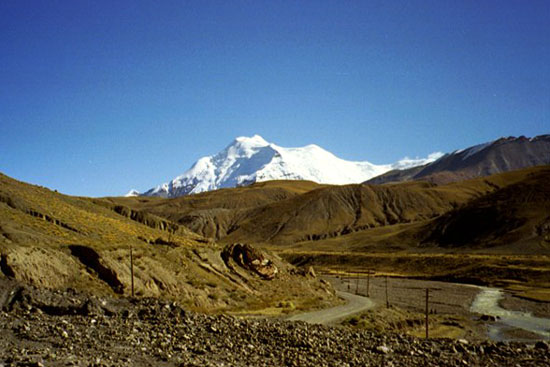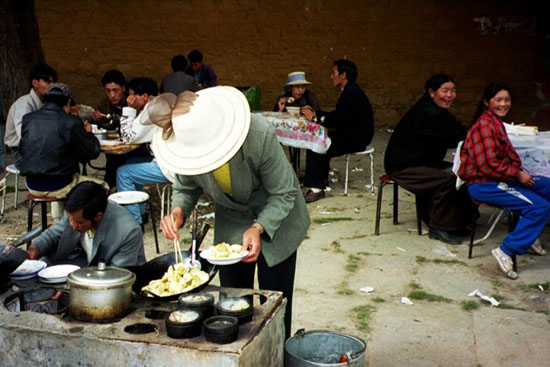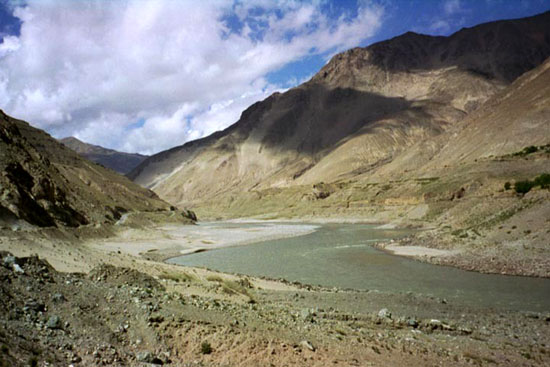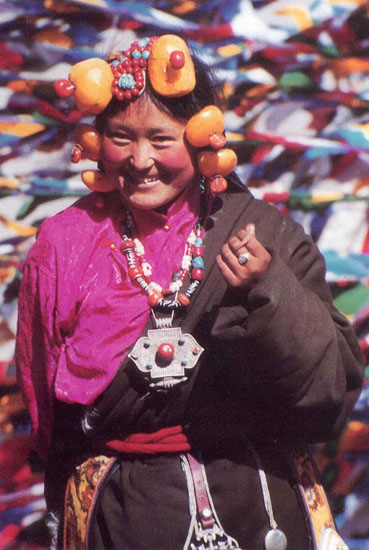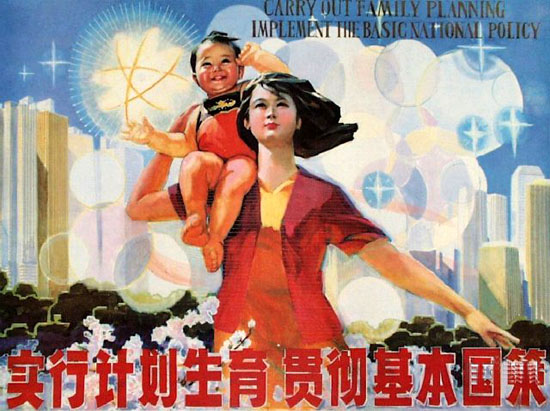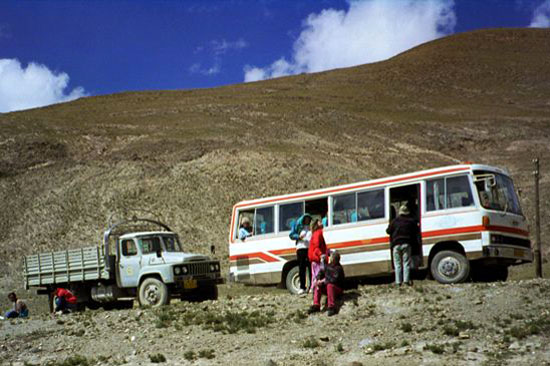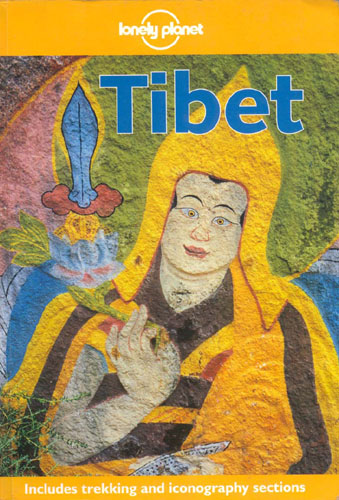|
Tibet
Nothing you hear, read or see will prepare you for what you find the first time you get to Tibet. I spent two weeks traveling around the country in April and May 2001 and this is what I saw.
The
Land
The elevation of Lhasa is two miles above sea level, about the same as the top of Mount Fuji, and that is about the lowest region in the whole country. The entire place is desert – almost completely brown, and looks like the surface of the moon. The little vegetation that exists is held in check by the sheep and goats. But the sky is a fantastic blue and the mountain peaks often are covered with a blanket of snow.
The
Tibetans
Everyone who has been to Tibet will tell you that the people are the friendliest in the world. This seems to be no exaggeration. Talking about this subject with other travelers, we came to the conclusion that the Tibetans and Burmese ranked one and two, with the Japanese being third among the people of the world. When I mentioned this rating to a Japanese, she replied, “We must try harder.”
The People Are Not Like the Land
One
Tibetan told me that the people are not like the terrain. Although the
land is rough, the people are gentle.
Supervision
Although tourists are allowed to move about freely in Lhasa and the immediate vicinity, it is required that they employ a guide and driver if they want to go farther a field. This is a picture of the expedition on the morning of our departure from Lhasa for Mount Everest base camp.
Mount Everest Base Camp
It takes 16 hours of grueling travel by Land Cruiser over Tibet’s infamous roads to get to Everest base camp from Lhasa. The trip takes you up another mile in elevation, with all the discomfort that accompanies high altitude sickness (headaches, shortness of breath, trouble sleeping and poor appetite). I can’t honestly say that the view of the mountain, which is so far off that it hardly gives you the impression of being that large, is worth all the hardship. But what you see along the way getting to base camp makes it all worthwhile.
One Country -- Two Systems 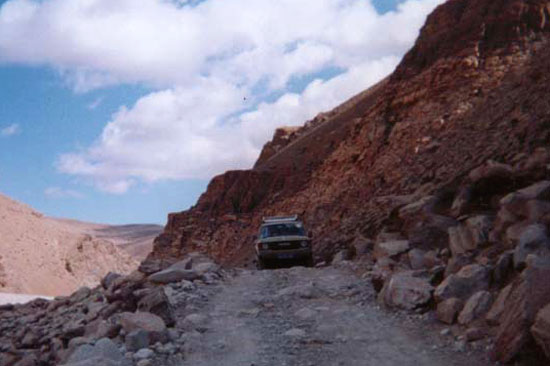 After you get about one hour outside of Lhasa, all of the roads are gravel. The Tibetans have complained that China has taken a ‘one country – two systems’ approach to the roads. They are paved in China and gravel in Tibet. The roads are often washed out, leaving the Land Cruiser to ford a river that may reach a depth of a couple of feet.
Howard Johnson’s -- Tibet Style
The food along the way was not as bad as you would expect. The kitchen of the little restaurant along the side of the road where we stopped had no electricity or running water, and the floor was dirt. Miraculously, aside from an upset stomach from airplane food, I didn’t get sick the entire time I was in Tibet.
Where’s the Men’s Room?
While at the rest stop I was told the men’s was out the door to the left. When I followed these instructions, I found myself standing on the bank of a river. When in Rome…. After returning to the restaurant I was curious to know where the ladies’ room might be. Out the door and to the right, I was told.
Five Star Guesthouse
The last 40 miles up to Everest base camp is a tortuous gravel road with never ending switchbacks that takes five hours to traverse. There is virtually nothing along the way but two or three little villages, one of which has a few Tibetan guesthouses. We stayed in one in the village of Tashi Tzong. The hospitality was great, the facilities Spartan. The cost of the bed and two meals was $8, which was probably about four times what a Tibetan might pay There was no running water, and the toilet was open-air, on the veranda.
Every Day Is Halloween The
best part of the guesthouse was the dining room. After dinner
about 20 people sat around the large table, half were backpacking
tourists, the others Tibetans. The natives were drinking yak butter
tea, which most of the foreigners were avoiding. It is as bad as it
sounds. Many of the locals could have won first prize at any
Halloween party I have ever attended. The woman who ran
the guesthouse was dressed up like a centerfold out of National
Geographic. She had a large silver belt buckle that looked like
she had won the world heavy weight boxing championship.
The men had bright red yarn braided into their thick black hair.
Orange and turquoise beads were suspended from their ears
and hair. One man wore a Soviet-era suit that appeared not
to have been cleaned since Stalin’s funeral.
Proletariat Paradise
I
awoke on May Day in a proletariat paradise. This was not a dream –
it really happened. On the way back from Mount Everest we stayed
in a hotel that had been built about 25 years before for the workers
of a government owned factory. The factory had been closed years
ago and the hotel given to the local city to operate. It was dark
and the ambiance was out of the Gulag Archipelago. But the
toilet flushed and the room was clean. The price was $7 per
night for the three of us.
The Pilgrim Bus Tibetans
take their religion very seriously and seem to be forever on
pilgrimages. There are buses that run regular routes between the
monasteries so that the faithful will be able to make their rounds.
The always good-natured Tibetans of course welcome tourists to
ride these buses with them. The fare is very reasonable – for
a few dollars you can travel all day, it seems. The view inside
the bus is often more interesting than the scenery outside. It
is not the fastest way to get around as the bus often takes
a circuitous route so as not to miss a temple. On occasions,
it will stop in a location that would seem to be in the middle
of nowhere, while all the pilgrims pile out of the bus and
visit another religious sight.
Young Pilgrims
I
was with three other travelers on a pilgrim bus in Lhasa when we met
these two little boys. The one on the right took it on himself to show
us around every temple. He wouldn’t let us miss a chapel. The black
marks on the nose have some religious significance.
Dentistry in Tibet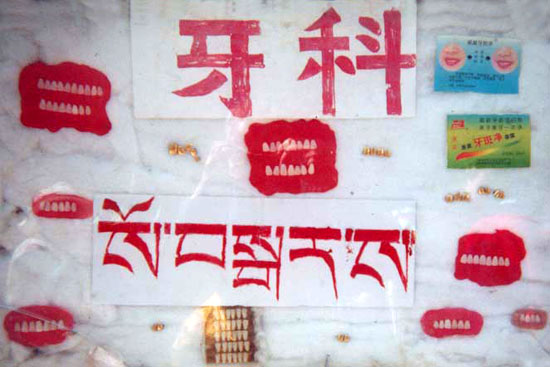 I found a dentist’s office next to one of the large temples in Lhasa. The services were rather bare bones. He offered only two things to his patients. He will take out a tooth for $4 and he will make a set of dentures, upper and lower, for $40. I was afraid to ask if anesthesia was available. I decided not to set up practice in Tibet, but I did get his name card. The next person who complains about my prices will be sent to Lhasa.
Don’t Leave Home without It
The Lonely Planet Guide to Tibet seems to have about a 95% market share. Everyone traveling there has a copy. It is both informative and fun. Highly recommended.
|
